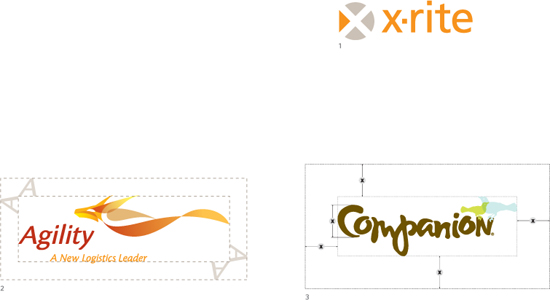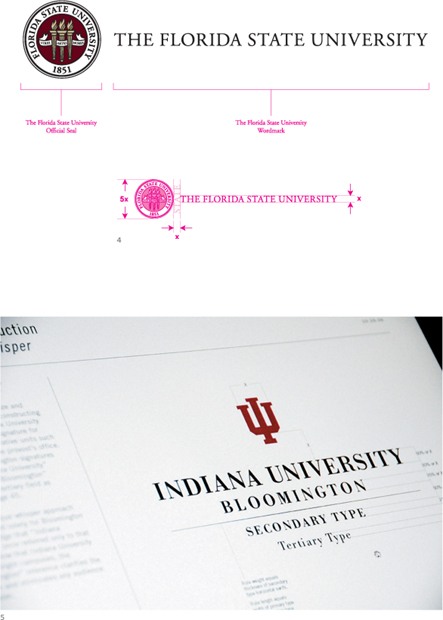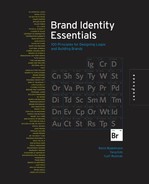DOCUMENTATION
64 Logo Specs
Once you’ve arrived at a perfect drawing or configuration for your graphic identity, take the time to write it down. Documenting the origin and development of a graphic identity challenges designers to work out what’s been going on in their heads. Quite often, this process also leads to refinements that improve the mark.
Articulating these ideas amounts to more than self-exploration. Documenting a graphic identity this way also allows you to share a record of your decision-making process—and the wisdom behind it. This record can build in room for variation while protecting against compromising the integrity of the mark. It establishes rules, guidelines, dos, and don’ts.
It isn’t any arrow; it is this arrow. It isn’t any serif typeface; it is Bodoni. Anything less adds up to something that is not this graphic identity.
1. X-Rite
People Design
2. Agility
Siegel+Gale
Sven Seger, Marcus Bartlett, Monica Chai, Inesa Figueroa, Holmfridur Hardardottir
3. Companion Baking
designlab, inc.
Scott Gericke, Patrick Davis Partners, Douglas Allebach
4. The Florida State University
Siegel+Gale
Sven Seger, Anne Swan, Johnny Lim, Austyn Stevens, Hayley Berlent
5. Indiana University
samatamason
Jack Jacobi, Kevin Krueger, Dave Mason, Jeremy Smith



A thorough set of logo specs should cover the precise drawing of a logo, the position of elements, spacing, color, and proximity to other elements. Attention to detail here can add to an overall sense of quality and craft, and set a tone for the overall program.
